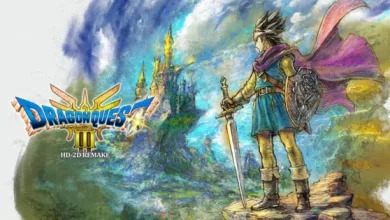Grandpa and Grandma Turn Young Again Anime Series Review – Review

Grandpa and Grandma Turn Young Again, henceforth referred to as Young Again, has come out at a weird time. On the one hand, Frieren: Beyond Journey’s End and Delicious in Dungeon both feature older protagonists and are both very recent and highly successful. On the other hand, the older main characters in both series are elves. While it’s not to say that there aren’t universal truths in these anime (because there are), it’s still worth noting that I can count on one hand how many central protagonists in anime and manga are humans over 50 with visible signs of age. And if one removes manga from the equation, the already small pool of such titles—a kiddy pool, to be sure—becomes little more than a puddle.
A lack of older main characters isn’t exclusive to anime, no matter how many times we re-watch The Golden Girls. However, this issue still exists in anime, and if we pivot into talking about the glorification of youth in media, whether in its broadest sense or even just fictional media, it’ll completely derail this review.
What I’m getting at here is that although the most popular anime of the moment hinges on having an older protagonist, it’s still easy to feel the absence of older main characters in anime because we don’t have many older protagonists who are more grounded in reality. And it’s in this context that we have Young Again: a series based on the manga of the same name by Kagiri Araido about an elderly couple—Ine and Shōzō Saitō—who wake up in their young adult bodies by way of a magic apple.
You’re in the wrong place if you were hoping for an anime that wants to prescribe a serious and/or scientific rhyme and reason for how this happened to the Saitōs. While some explanation, backstory, and rules to this phenomenon are soon explained, it’s never critically examined. And frankly, an anime as light-hearted as this one is probably better off for it. Young Again wears its sentimentality on its sleeve and constantly tries to crack a smile from its audience, whether by silly moments like someone attempting to pull a phone scam on Ine, or heartwarming moments where the Saitōs reaffirm how much they love their family and each other. But while this anime is primarily a comedy, it doesn’t let that hold it back from having its fair share of painful moments sprinkled throughout the series.
Young Again is episodic more often than not, making it more suited to be enjoyed at a slower pace instead of a quick binge. And that suits this anime just fine, as despite the expectations its premise might set, the daily lives of the Saitōs don’t change much. And in some ways, it’s hilarious that they don’t let something as massive as magically regaining their long-gone youth impact their lives significantly. They still mostly eat the same foods, do the same work, have the same worries, and continue to dote on their grandchildren—even if one of them does, even if only briefly, seem to be crushing on her grandpa. Instead, the main changes the Saitōs experience tend to be in how their renewed youth prompts them to do more with their grandchildren than they would’ve been able to before and to reminisce upon their lives—in particular, the early days of their romance, which you see unfold largely through flashbacks throughout the series.
I don’t doubt that some viewers will get a lot of enjoyment out of watching the peaceful daily lives of the Saitōs. That the Saitōs don’t allow their regained youth to instantly uproot their lives will probably appeal to some viewers. Others, meanwhile, will find that this makes for an unengaging viewing experience, and episodes will gradually start to feel longer and longer. The premise feels like it’s not living up to its vast potential—like the show is often less interested in actually exploring what an elderly couple would do if they returned to their young bodies and more interested in simply showing them living their day-to-day lives, except now everyone thinks they’re gorgeous. As a viewer, this can be anything from confusing to frustrating. This is largely why I don’t think it’s a coincidence that many of Young Again‘s best moments/episodes are those when the Saitōs go out of their way to do something that they can only do with their restored youth, such as trips to Tokyo and Atami.
As for me, I fell somewhere in the middle of these two camps but leaned more into the first one. The idea of a sweet elderly couple returning to their young bodies doesn’t feel like it’s being taken advantage of as effectively as it could be. At the same time, this shortcoming is often superseded by how charming the Saitōs are and how there’s something to be said about how ironic it is that the lives of the elderly can make for a fresh-feeling viewing experience because we so rarely see it in anime (or at least, in a way that’s meant to be more down-to-earth).
The easy-going atmosphere of Young Again is emphasized by a softer art style, which Mamiko Noto and Shinichirō Miki lead the charge in bringing to life through their performances as Ine and Shōzō, respectively. Noto, in particular, is incredibly endearing as Ine Saitō, who admittedly has more moments than Shōzō Saitō that allow her voice actress flex her acting muscles (which anyone even remotely familiar with Noto’s works—which includes, but isn’t limited to, roles like Sawako Kuronuma from Kimi ni Todoke, Ai Enma from Hell Girl, Kotomi Ichinose from Clannad, and Rin from InuYasha—knows she has).
This series is conceptually very unique, and some might find it worth watching just for that. But its execution still leaves plenty of room for improvement. The same things that are going to make this series likable to some will inevitably make others find it boring—in fact, I have little doubt that plenty of viewers will leave this series having felt both at some point or another (I know I most certainly did, at least). Either way, the Saitōs are adorable and easily the shining stars of this series. Even at this series’ lowest points, I never tired of watching what thoughtful, heartfelt gestures they’d do next for their loved ones (including each other).
Disclosure: Kadokawa World Entertainment (KWE), a wholly owned subsidiary of Kadokawa Corporation, is the majority owner of Anime News Network, LLC. One or more of the companies mentioned in this article are part of the Kadokawa Group of Companies.
Source link
#Grandpa #Grandma #Turn #Young #Anime #Series #Review #Review


